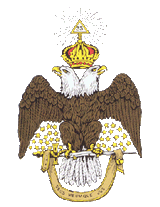Search Results
7/9/2025, 12:59:06 AM
>>509871724
>>509871804
>>509872426
>>509872581
>The seed or the myth of Stuart Jacobite influence on the higher degrees may have been a careless and unsubstantiated remark made by John Noorthouk in the 1784 Book of Constitutions of the Premier Grand Lodge of London. It was stated, without support, that King Charles II (older brother and predecessor to James II) was made a Freemason in the Netherlands during the years of his exile (1649–60). However, there were no documented lodges of Freemasons on the continent during those years. The statement may have been made to flatter the fraternity by claiming membership for a previous monarch. This folly was then embellished by John Robison (1739–1805), a professor of Natural Philosophy at the University of Edinburgh, in an anti-Masonic work published in 1797. The lack of scholarship exhibited by Robison in that work caused the Encyclopædia Britannica to denounce it
>A German bookseller and Freemason, living in Paris, working under the assumed name of C. Lenning, embellished the story further in a manuscript titled "Encyclopedia of Freemasonry" probably written between 1822 and 1828 at Leipzig. This manuscript was later revised and published by another German Freemason named Friedrich Mossdorf (1757–1830). Lenning stated that King James II of England, after his flight to France in 1688, resided at the Jesuit College of Clermont, where his followers fabricated certain degrees for the purpose of carrying out their political ends
>By the mid-19th century, the story had gained currency. The well-known English Masonic writer, Dr. George Oliver (1782–1867), in his Historical Landmarks, 1846, carried the story forward and even claimed that King Charles II was active in his attendance at meetings—an obvious invention, for if it had been true, it would not have escaped the notice of the historians of the time
>>509871804
>>509872426
>>509872581
>The seed or the myth of Stuart Jacobite influence on the higher degrees may have been a careless and unsubstantiated remark made by John Noorthouk in the 1784 Book of Constitutions of the Premier Grand Lodge of London. It was stated, without support, that King Charles II (older brother and predecessor to James II) was made a Freemason in the Netherlands during the years of his exile (1649–60). However, there were no documented lodges of Freemasons on the continent during those years. The statement may have been made to flatter the fraternity by claiming membership for a previous monarch. This folly was then embellished by John Robison (1739–1805), a professor of Natural Philosophy at the University of Edinburgh, in an anti-Masonic work published in 1797. The lack of scholarship exhibited by Robison in that work caused the Encyclopædia Britannica to denounce it
>A German bookseller and Freemason, living in Paris, working under the assumed name of C. Lenning, embellished the story further in a manuscript titled "Encyclopedia of Freemasonry" probably written between 1822 and 1828 at Leipzig. This manuscript was later revised and published by another German Freemason named Friedrich Mossdorf (1757–1830). Lenning stated that King James II of England, after his flight to France in 1688, resided at the Jesuit College of Clermont, where his followers fabricated certain degrees for the purpose of carrying out their political ends
>By the mid-19th century, the story had gained currency. The well-known English Masonic writer, Dr. George Oliver (1782–1867), in his Historical Landmarks, 1846, carried the story forward and even claimed that King Charles II was active in his attendance at meetings—an obvious invention, for if it had been true, it would not have escaped the notice of the historians of the time
Page 1
